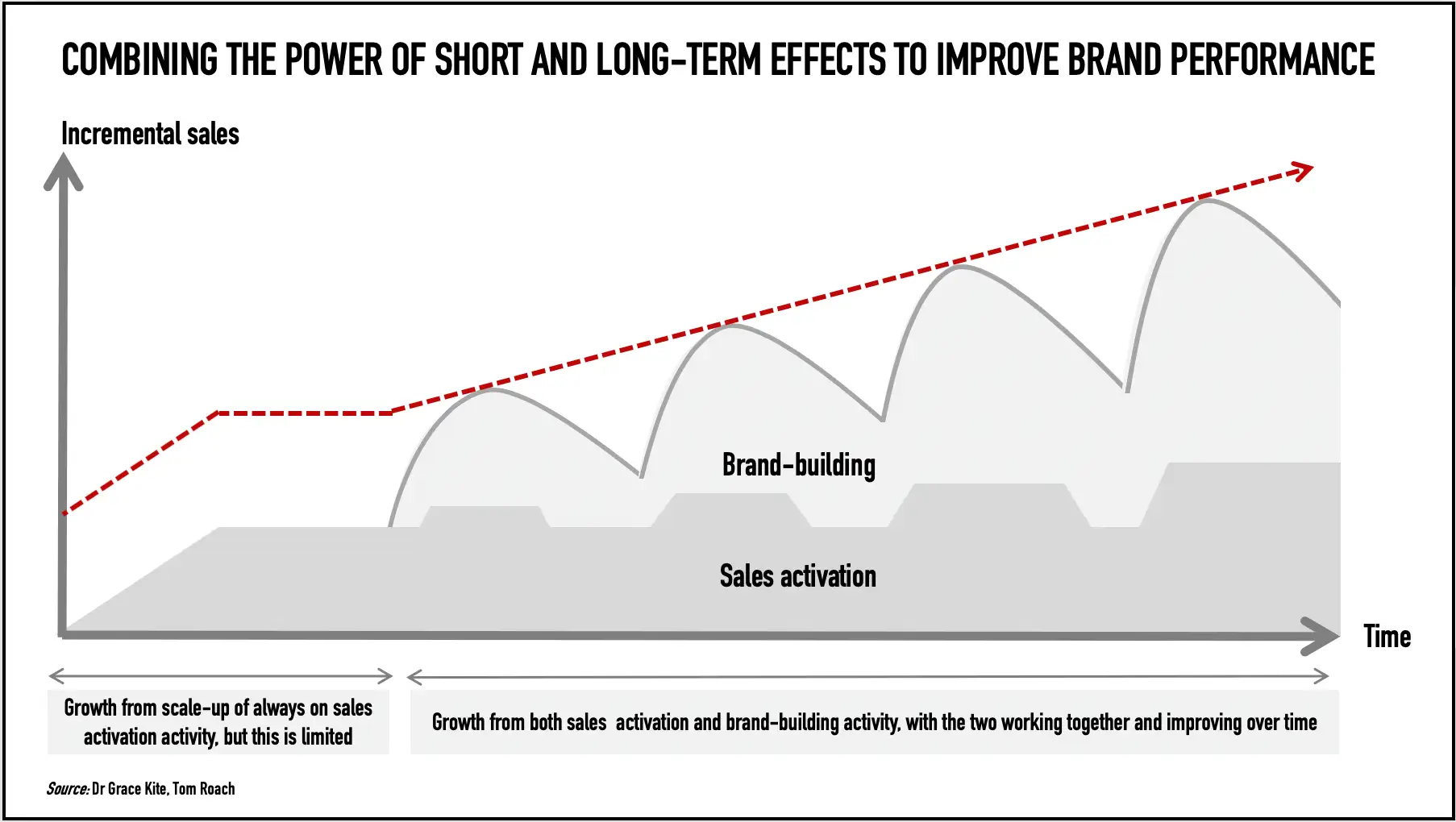Opposing the short and the long term is a commonplace in marketing.
On the one hand, performance marketing is focused on measuring KPIs (traffic, acquisition, conversion, CAC, ROAS, etc.) that are now accessible almost in real time, with increasing depth. While absolutely necessary for performance marketing success, focusing only on these KPIs is still a short-term view.
On the other hand, long-term marketing, “branding”, which aims to build a strong, coherent brand over time, and is based on a more strategic vision: positioning the brand, making it attractive to its target.
These two camps are often opposed. And yet, it is clear that combining the two approaches is not only opportune: it is vital. Real performance is measured in the long term, but short-term management gives more reactivity.
It is time to design an approach reconciling the two temporal dimensions of performance, in order to support marketing departments in the creation of value and return on investment over time.
Aim for long-term performance
Marketing departments are often judged on short-term KPIs, sometimes for lack of anything better, and often by inability to give themselves time, in the face of strong economic pressure.
But real marketing performance takes time to settle in, and to be measured. It is about the value generated for the brand and for the company thanks to marketing levers.
This value is not just about measurable short-term sales. It is essential to focus on customer loyalty. A company is all the stronger when it knows how to build loyalty. However, by definition, loyalty requires time to be tested and measured. Loyalty is based on the customer experience, the quality of the customer relationship, the brand’s promise of value in exchange for this loyalty… Unlike promotional operations, loyalty is therefore a question to be considered over the long term.
Certain marketing effects whose value is not directly economic must also be taken into account: strength of the brand and its products (notoriety, attractiveness), knowledge of the market, first-party data collected, audience captured, etc. Do not take take these strengths into account and focus on sales would be a mistake. The performance measurement system must therefore make it possible to assign a value to these “assets”: the complete return on investment (R.O.I.) must ideally integrate the economic component and this “indirect” component.





